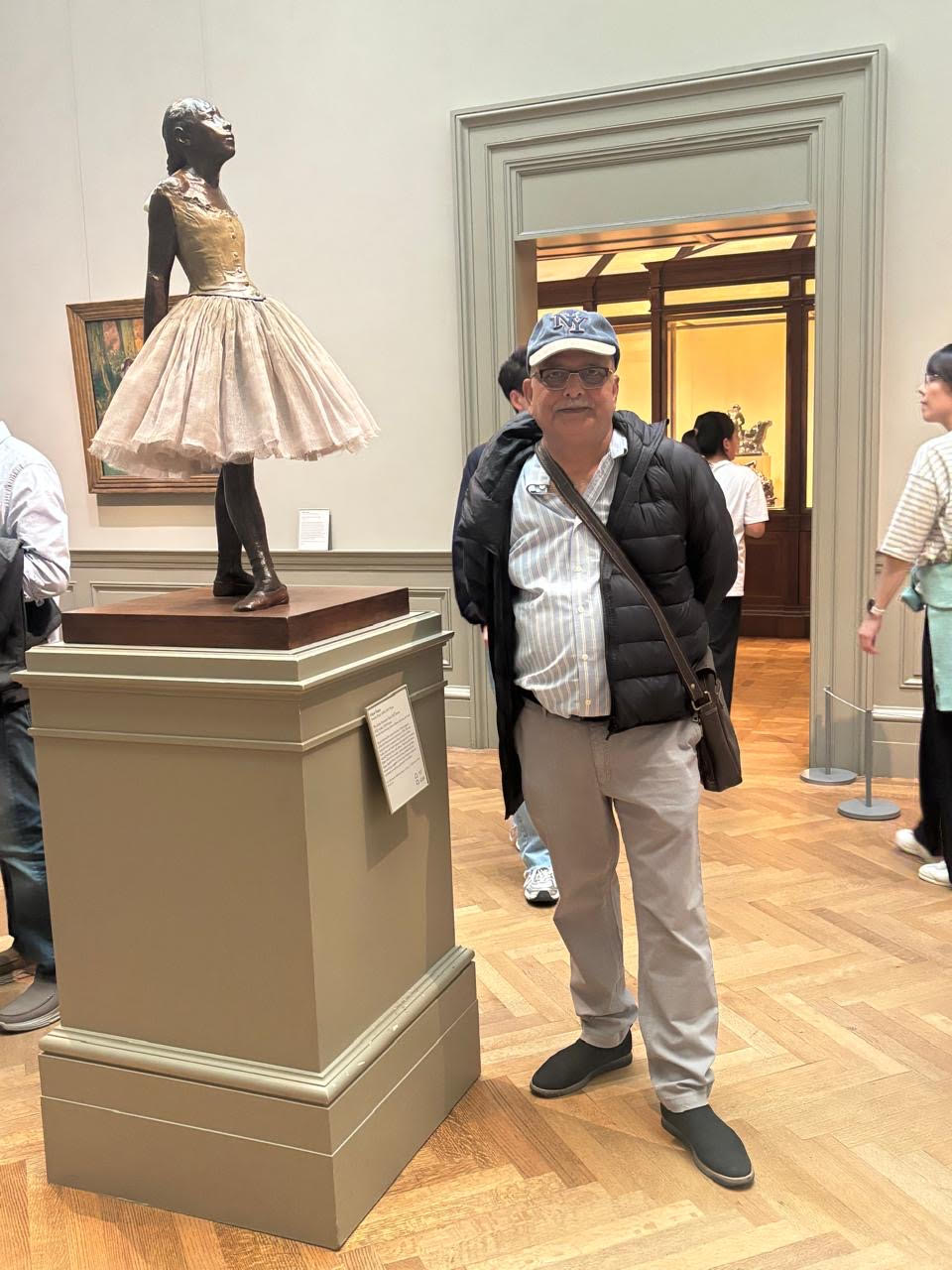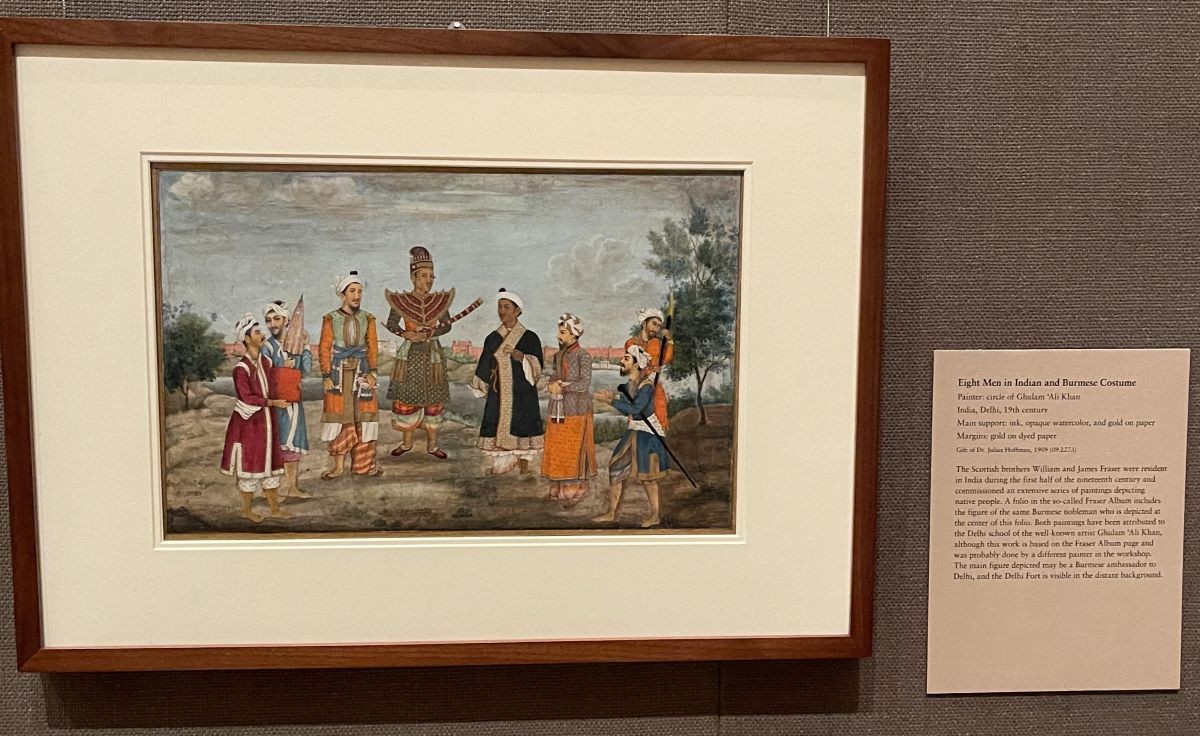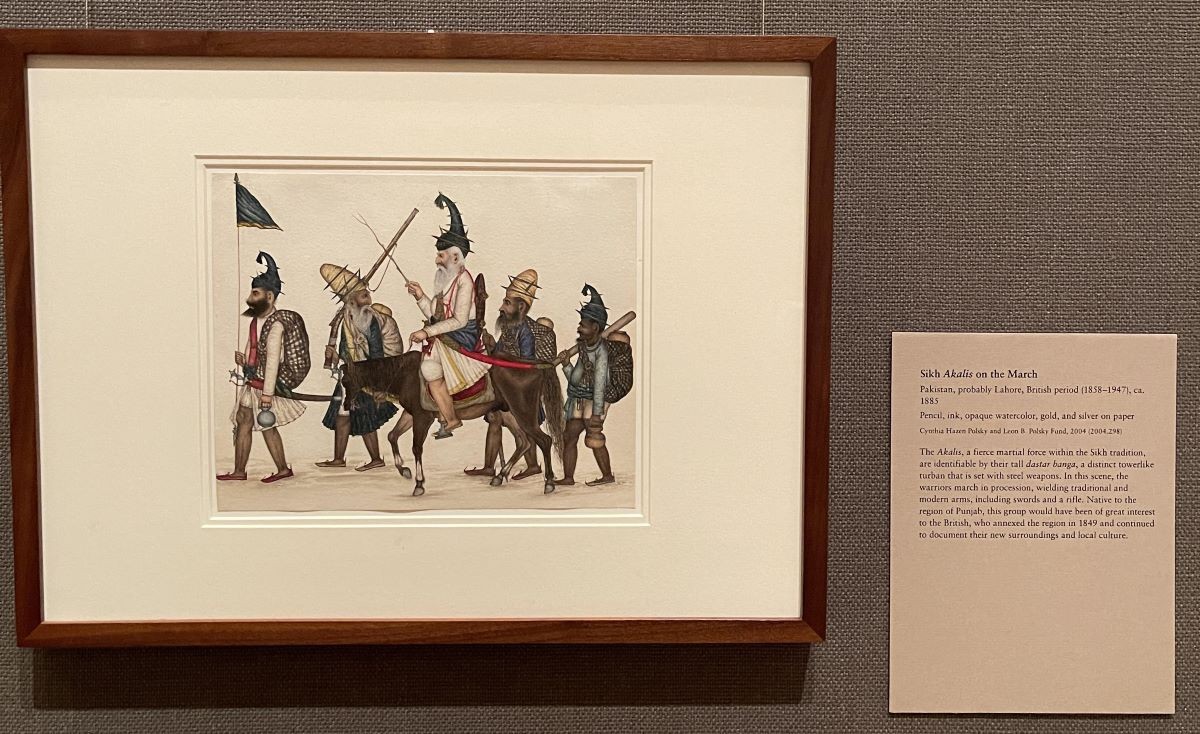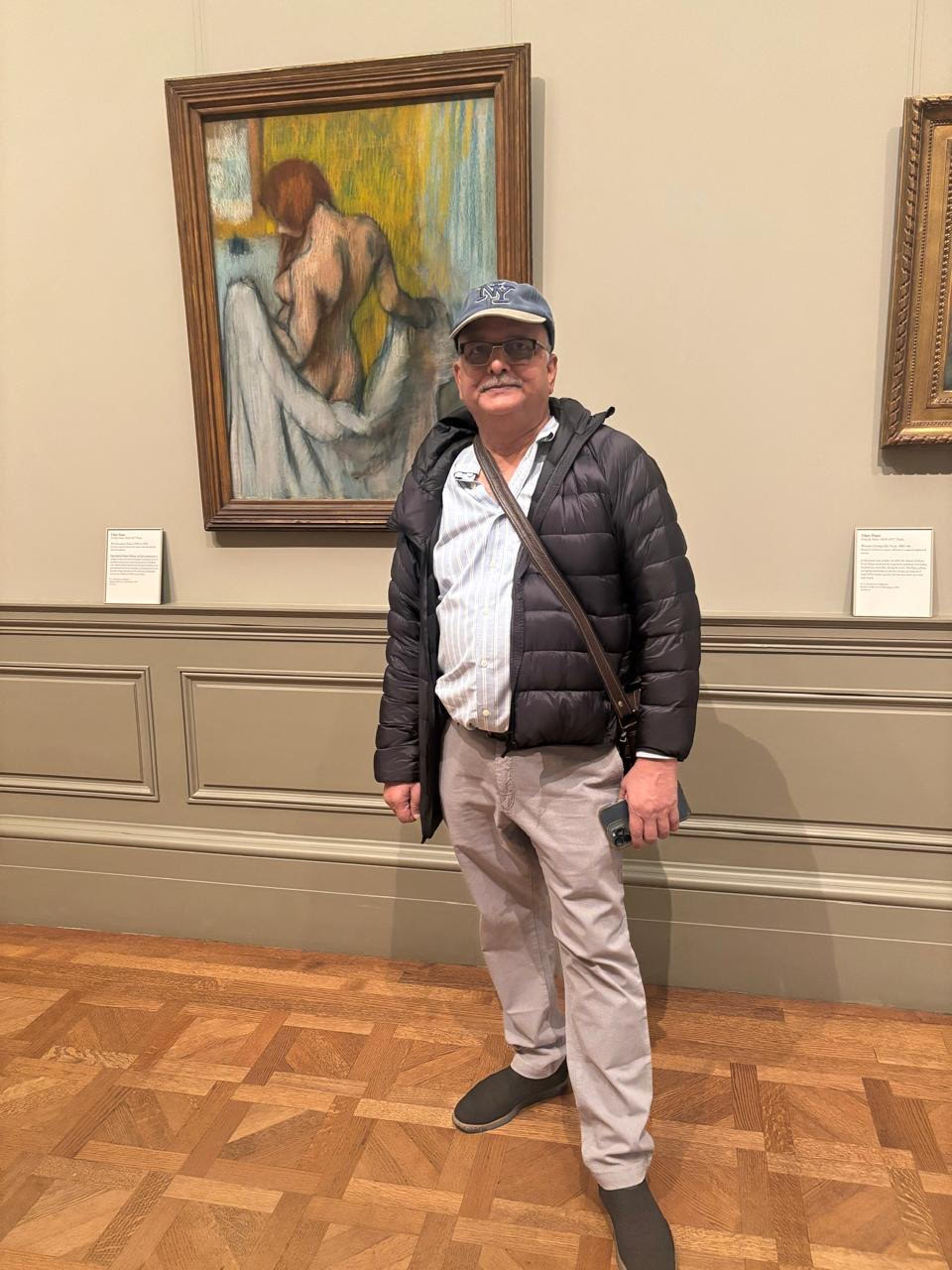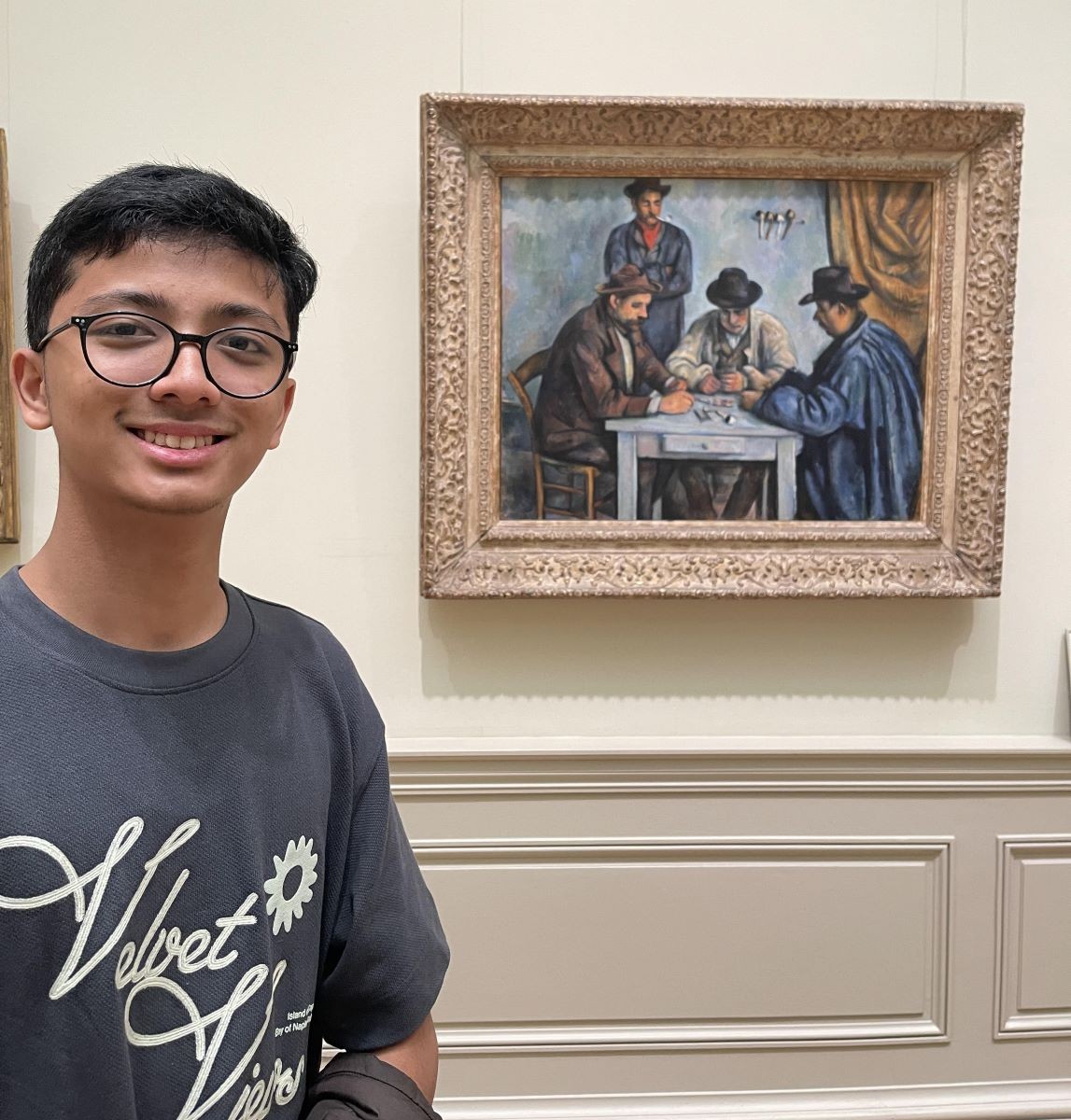News & Blog
A Scholarly Sojourn Through The Met: Encounters with Art, Memory, and Material Culture - Vikram Bachhawat
A recent visit ( 26-5-25) to The Metropolitan Museum of Art, New York, undertaken in the company of family and friends, offered a rare opportunity to engage with an extraordinary range of artistic traditions across time and geography. This visit was made all the more meaningful through the generous facilitation of complimentary passes by Mr. William Blueher, of the Thomas J. Watson Library at The Met.
As one steps into The Met, one does not simply enter a museum but traverses epochs of human endeavor, bearing witness to civilizations in conversation with one another. The spatial layout itself, encyclopedic yet thematically coherent, invites both intuitive wandering and directed inquiry.
Modernism and the Reframing of the Gaze
Our collective journey commenced in the galleries dedicated to 19th- and early 20th-century European art, where the dialogic progression from realism to abstraction was palpably evident. Edgar Degas’s After the Bath, with its softly modulated pastels and unidealized portrayal of the female figure, stands at the intersection of intimacy and innovation. Its compositional framing—partially obscured, seen from behind—subverts the classical nude, replacing voyeurism with introspective realism.
Nearby, Little Dancer of Fourteen Years, Degas’s iconic sculpture rendered in bronze and dressed in real fabric, further challenges sculptural conventions by merging fine art with theatrical costuming. The fragility of adolescence is here rendered monumental, its presence both assertive and vulnerable.
Henri Matisse’s Odalisque with a Turkish Chair, painted in 1928, carries the lineage of Orientalist themes but refracts them through a distinctly modernist idiom—saturated color planes, rhythmic linework, and a spatial flattening that fuses figure and decor into a unified surface.
In the adjacent galleries, Paul Gauguin’s Tahitian Women on the Beach and Two Women offered a moment of quiet introspection. Gauguin’s use of unmodulated color and his eschewal of European perspectival space are not simply aesthetic choices but philosophical statements—manifestations of a search for spiritual primitivism within colonial geographies. The ambivalence of this position, viewed through a contemporary lens, opens fertile ground for postcolonial critique.
Portraiture and Psychological Depth
A highlight of the visit was Vincent van Gogh’s L’Arlésienne (Madame Ginoux)—a portrait that fuses the immediacy of observation with the intensity of inner life. Rendered with his signature impasto and gestural line, the painting is not merely a likeness but a psychological study, foregrounding the sitter’s contemplative solitude.
Equally compelling was Pablo Picasso’s At the Lapin Agile (1905), from his Rose Period. The painting not only features the artist as a harlequin but also memorializes his companion Germaine Pichot, whose entanglement in the suicide of Picasso’s close friend Casagemas haunts the composition. This work, commissioned for the Montmartre cabaret of the same name, is imbued with melancholy and theatricality, representing an early, deeply personal articulation of identity and artistic self-mythologization.
Cézanne, Structure, and the Emergence of Modernity
Paul Cézanne’s The Card Players stands as a fulcrum in the development of modern painting. His formal reduction of volume and compression of space set the groundwork for Cubism. The figures—silent, monumental—are stripped of narrative, becoming elements in a compositional architecture of balance and tension. It was particularly gratifying to share this encounter with my son, whose own developing interest in structure and form found resonance in Cézanne’s rigorous vision.
Indian Company School Paintings: Cross-Cultural Aesthetics
A visit to the museum’s South Asian galleries revealed important examples of Company School painting—works created by Indian artists for British patrons during the 18th and 19th centuries. These hybrid visual documents combine Indian techniques of miniature painting with European conventions of perspective and realism.
Sikh Akalis on the March, attributed to an artist active in Punjab circa 1855, exemplifies this intersection. The painting documents a religious procession with military overtones, rendered in meticulous detail and with an almost anthropological gaze. Such works are not merely illustrations but are invaluable records of sartorial, martial, and ceremonial practices in pre-modern India under colonial observation.
Equally compelling was View of a Mosque and Gateway at Mathura, where an Indian artist trained in European watercolor traditions has translated a familiar Mughal landscape into the idiom of Romantic topography. These paintings, in their hybrid form, invite deeper reflection on visual economies under empire and the agency of indigenous artists navigating colonial patronage.
Sculptural Dialogues: Motion, Form, and the Fragment
In the sculpture galleries, Auguste Rodin’s Torso of The Walking Man demonstrated the expressive potential of the fragment. Though headless and armless, the work pulses with energy—its musculature caught mid-stride, suggesting forward motion and temporal flux. Rodin’s approach here redefines completeness; the absence becomes the very site of artistic intensity.
In a more personal register, the viewing of equine bronze sculptures evoked the anatomical precision and grace that animates my parallel interest in thoroughbred horse racing. The museum’s collection of small bronze studies of horses in motion offered a profound example of how form, anatomy, and kinetic gesture converge in sculptural practice.
Ornamental Geometry and Devotional Space in Islamic Art
The Islamic galleries culminated in an encounter with a monumental 14th-century Iranian mihrab—a prayer niche rendered in intricately glazed tiles. Its inscriptions, composed in elegant thuluth script, framed a geometry that guides spiritual orientation while demonstrating extraordinary material craftsmanship. The interplay of abstraction, calligraphy, and spiritual function in such works foregrounds the Islamic tradition’s unique integration of form and metaphysical intent.
